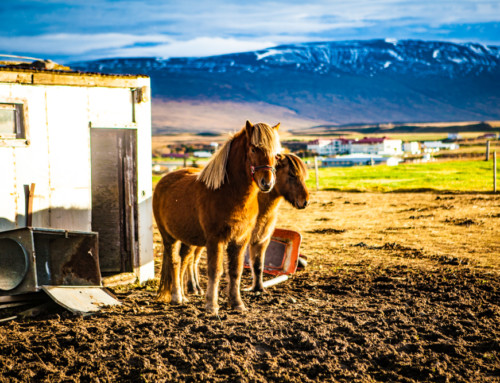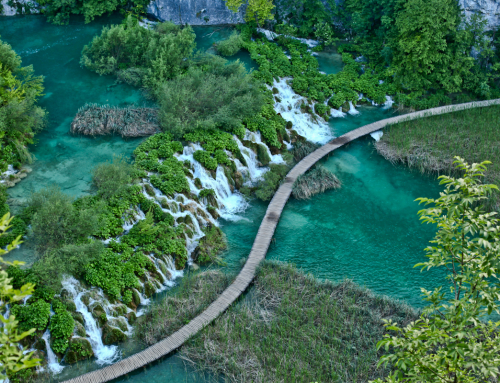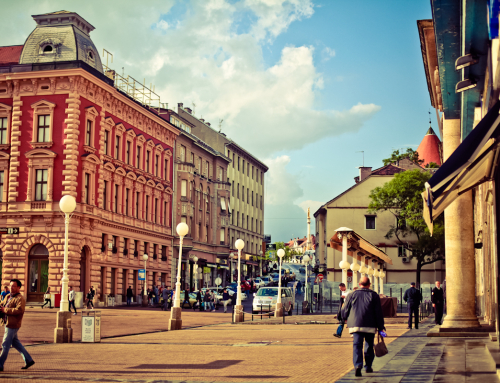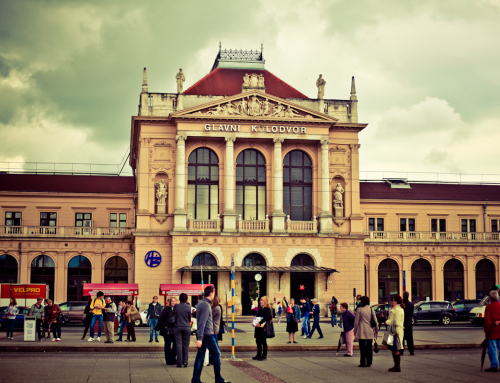Getting around the Philippines by any mode of transportation other than air is not for the faint of heart, or faint of stomach. But it’s a lot cheaper than flying! We’ve spent the last two days traveling from Boracay to Sipalay, and it wasn’t difficult, but it took a good sense of humour, some teamwork, patience and a bit of bravery.
So far we haven’t seen a single set of traffic lights. That’s because they’re expensive to install, maintain and operate, and drivers just use their horns instead.
On Saturday we took a boat from Boracay island to Caticlan, where we boarded a small bus. The bus fare was 350 pesos. Tyson and I took what we thought were the last two seats available, and waited for the bus to leave. But it didn’t. The driver turned it on, pulled it out and then backed it in again, all the while bantering with the other Filipinos who appeared to be working at the station. Nothing was organized, and there seemed to be a lot of people doing a lot of work that ended up amounting to very little of anything.
Wasn’t I silly to believe Tyson and I might have the luxury of the back seat to ourselves! After about an hour or idling, two more people were crammed into our seat, and another seat was pulled from nowhere for a third. Another 15 minutes passed, and the bus still hadn’t left. Finally the driver came around and asked everyone to chip in an additional 30 pesos. Apparently he was able to pull another seat out of nowhere, and it was still empty. We could either wait or pay. We paid, and off we went.
If there are road rules here, I can’t figure them out. There are plenty of signs displaying speed limits, school zones and accident-prone areas, but none of these are obeyed. And everyone has the use of the road. Riding the bus is like playing Mario Kart minus the epileptic colour scheme. There were pedestrians, jeepneys, bicycles, cars, buses and trucks of every size. Our driver spent more time in the wrong lane trying to pass obstacles than he did in the right lane. We blazed through communities full of shabby buildings, with people idling near the road. We passed beautiful farmland, and the odd skeletal bovine tied in an unfenced field.
Just when I was beginning to feel comfortable with our driving conditions, we hit a mid-sized dog. And we killed it. In our driver’s defense, there was no way he could have missed it, and the stray dogs here really do like to sit on the road. Tyson witnessed more of it than I did, winced, and told me not to look out the back window. I didn’t.
Our bus dropped us off in a city called Iloilo, and for an extra 15 pesos, our driver took us right to the pier we were headed to. Because we’re white, no one does anything extra for us without a price tag. Or at least, I feel like that’s the case. Maybe it’s just that so many people here are scraping by to survive that they literally can’t do anything extra without charging for it. We paid the 15 pesos, because the alternative was a taxi, which would have surely cost more.
When we emerged from the bus, we looked around us and realized that after a 5 hour ride from the Philippines’ most tourist-laden destination, we were now extremely far away from anything familiar. You don’t understand how that feeling affects you until it happens. Filipinos turned to stare at us like we were the first white people they’d ever seen. A child came up and begged, assuming that despite our shabby appearance, we must be wealthy. I suddenly felt a bit uncomfortable in my shorts.
We bought our boat tickets, and sat on the pier to wait. I smiled at a few people, who smiled back. The sun was setting. We guarded our stuff.
The boat arrived, the gangplank lowered, and it was efficiently evacuated. As we boarded, I marveled at how quick the entire process was, comparing it to BC Ferries. At home, we might have a complex machine to lower the large deck for passengers, but two guys and a wooden plank is a lot faster, and not really any less safe if you’re watching where you’re going. While the safety standards for operating the boat are probably strict, those same standards don’t seem to apply to loading passengers. However, there seems to be a general understanding here that a person’s well-being lies in their own hands. People boarded with care, and no one complained. Neither did we.
The boat-ride took about an hour and 15 minutes, and landed us in Bacolod, Negros Island. We unloaded, grabbed a cab and asked to be taken to Pension Bacolod, a hostel that comes highly recommended by our trusty Lonely Planet guide.
The place was clean and cheap, and the staff were friendly. There must have been a bit of a misunderstanding at the front desk, because Tyson and I spend the night curled up in a single bed, while the one across the room went unused. But we were too tired to complain. Before calling it a night we wandered into the lobby for a bite to eat, and ended up watching the end of a very close basketball game between two Filipino teams. We cheered for the same team everyone else did, but they lost.
Yesterday morning we slept in a bit later than we’d hoped, and our morning got off to a sluggish start. We showered, had some breakfast and located the nearest bank so we could withdraw enough cash to last us a few days in ATM-less Sipalay. It was within walking distance, and so was the bus terminal, so we were in good shape.
Or so we thought.
When we arrived at the bank, which was closed, Tyson inserted his card into the ATM and asked for 20,000 pesos. The machine told him it couldn’t print a receipt and was going to charge us 200 pesos for the withdrawal. We weren’t too concerned about a lack of receipt since we were at the national bank, but we’re trying really hard to get around being charged heavy bank fees. However, we didn’t have time to search out another machine, so we begrudgingly accepted, and carried on with the transaction. No money came out.
We stood there in awe for a moment before we clued in to the fact that a bank machine had declined to produce about $500 CAD in funds, which it potentially now had a record of giving us.
Realizing there was nothing we could do, we wrote down the machine’s ID, and the 24-hour help line listed on it. We successfully withdrew 10,000 pesos from the machine next to it, and rushed back to the hostel. Though we’d already checked out, I asked if we were able to use the internet, and they obliged.
To our relief, our online banking record showed the second withdrawal, but not the first, so it looked like we were safe. Just to be sure, we emailed the bank. I did a bit of research, and found the maximum withdrawal limit to be 20,000 pesos, so I have no idea what happened.
That being said, we now only have half the amount we’d intended, so we have to be extremely careful how we spend our money.
Off to the bus terminal we went. When we arrived, we found it was all boarded up, and though we could see busses, no one was around. We were very confused. After a moment of trying to make sense of our situation, (me asking myself what I’d do if I was a participant of The Amazing Race) back to the hostel we went. The front desk guy saw us coming and probably wondered what the heck we needed now!
It turns out there are two bus terminals, and we’d gone to the wrong one. The other was further away, and we probably should have hopped into a taxi, but we’re determined people, so we walked. It was extremely hot out and I think I sweat more than I’ve ever sweat before.
It’s no wonder the unemployment rate is so high in the Philippines. We saw a lot of idle people, mostly men. They eyed us with mild curiosity, and the moment we looked lost, some swooped in to try and “help” us. We brushed them off politely, and I snuck a peak at my map every couple of blocks.
When we arrived at the bus terminal, we located the correct vehicle and boarded it. Turns out we were crammed in the back again, this time with even more people. This bus being public transportation, it didn’t take us more than a few stops to realize we were lucky to have seats at all.
At first it was very unclear how we were expected to pay for our ride. It seems that every job held in Canada requires at least three people in the Philippines. That isn’t so much the fault of the people as it is the lack of infrastructure and organization. Instead of one person operating the bus, this one had a driver, and two guys who crawled up and down the cramped aisles collecting fare. It was also one of these fare-collector’s job to let the bus driver know when to stop. He did this by clanking his hole-puncher on the luggage rail.
Shortly after we figured out how to pay, it became very unclear how the fare-collector was doling out change, and for most of the ride, we were convinced we weren’t going to get back the 160 pesos he owed us. Turns out he has some elaborate mechanism for remembering how much money he owes who, and people seem to have no problem waiting two unnecessary hours for change. Instead of telling us this, he played a cruel joke, and told us he didn’t give out change. We couldn’t understand why people were laughing at us, and I must say I wasn’t really impressed.
This bus ride was 5 hours long, and very bumpy. How I didn’t get car-sick is a miracle. Our driver had a horn-heavy hand, and no one bothered to close the door while it was going full speed. Instead, people used the doorway as extra standing room, holding on so they wouldn’t fall off the bus. Rather ironic compared to Hong Kong, where you can’t get on an escalator without a safety message.
The sun set, and the bus barreled on in complete darkness, honking at every set of oncoming lights. Finally, the bus stopped and we got brusquely ushered off. We found ourselves standing in front a sign that read: Sugar Beach, 5.5 kms. Next to the sign were a couple of guys in a Pak-pak. They drove us down a very narrow road to a river. In complete darkness, we boarded a small paddle-boat. On the other side, a kid walked us about 300 metres to our destination.
Driftwood Village is rustic, but quaint. The guy who owns the place is Swiss, though he’s been in the Philippines a long time. He’s rough around the edges, but has a lot of interesting stories to tell. After we arrived, we ate dinner and sat around a large table with our host and a few other guests. Then we showered and went to bed.
We’ll probably spend about 5 days here, but this is the last update for now, because they charge a lot to use a very slow internet connection.






Hey you guys, I love reading what you’ve shared so far, it sounds lovely and i can’t wait to read the next update. reading them is the perfect way to take a break from homework!! i can picture it all in my head!
love to you both,
Coups
Great blog! Sounds like an incredible adventure. Thanks for sharing with us – looking forward to reading more!
All interesting experiences! Your bus stories (especially the ‘pilot’/’copilot’ system) remind me of some of my own bus trips years ago in the Andes and in Mexico with Karen. It kind of all sounds like the Amazing Race, the lifestyle edition!!
I can’t wait to hear more!
WOW! really great to be young – it is all so breathtaking – something you’ll remember all your life.
Just take care and have a safe trip – Thanks Caroline for the update and we’ll look forward to following along on the rest off your travel.
Luvs Syl & Kay
Your story reads like a wonderful novel, full of adventure(!), irony and astute observation. I could feel your frustration, like being in a dream and nothing is going right. What an amazing experience! Hope you managed to take some photos. Hope the next ‘chapter’ is much more relaxing. Stay safe and have lots of fun.
Love to you both.
Glad you made it safely to your destination. Sounds like you are learning alot about how to travel efficiently through a developing country – you’re bound to make a few small mistakes, but you’ll learn quickly from these. Do the buses have seat belts or are you crammed in so tightly that they are not necessary?
Love Dad